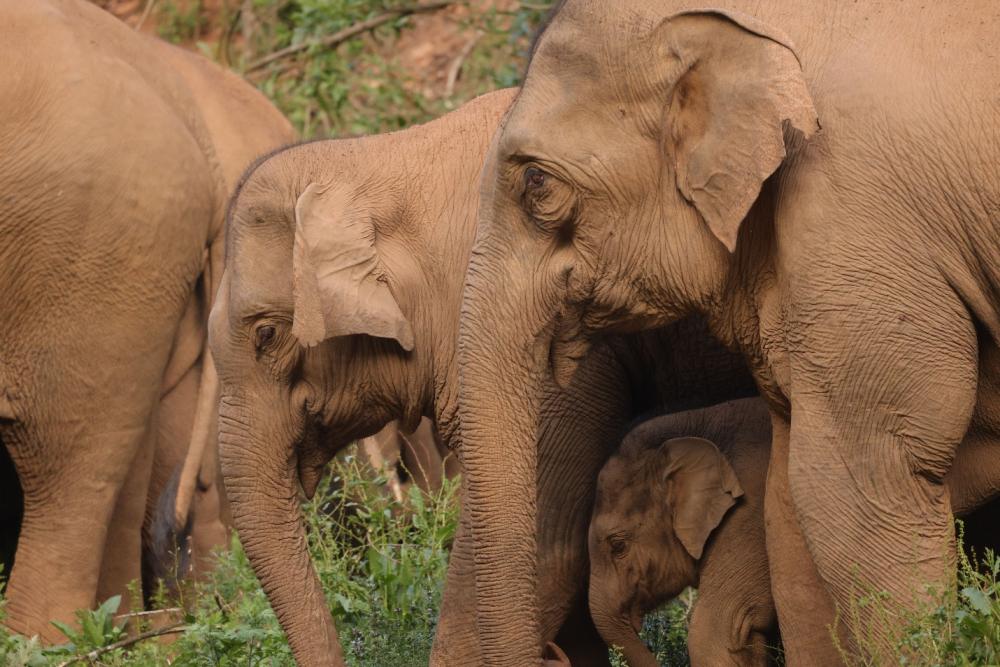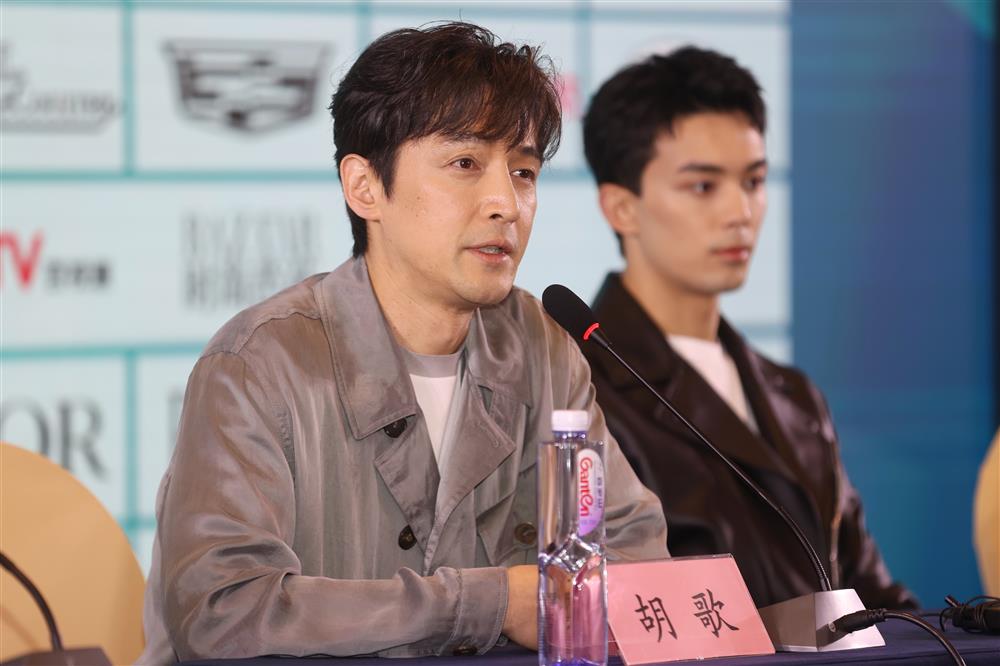Cultural inheritance and development in Shanghai | Is there a free postal area in ancient times? Reviewing the Past and Learning from the Past to Prove Archaeological Achievements to Prove "Why China" Culture | China | Achievements
Editor's note
"it is the only way to open up and develop socialism with Chinese characteristics on the profound basis of more than 5,000 years of Chinese civilization, and to combine the basic principles of Marxism with China's specific reality and with China's excellent traditional culture." General Secretary Xi Jinping's speech at the forum on cultural inheritance and development comprehensively, systematically and deeply explained a series of major theoretical and practical issues concerning the inheritance and development of Chinese culture. it also issued an exciting call: to strengthen cultural self-confidence, shoulder the mission, and strive for something, make joint efforts to create a new culture that belongs to our time, and build the modern civilization of the Chinese nation.
For the new era and new cultural mission, Shanghai is actively practicing its own path of exploration. Starting from now, this newspaper has launched a series of reports on "Cultural Inheritance and Development in Shanghai", showcasing the thinking and inspiration gained by Shanghai cultural workers in actively promoting the creative transformation and innovative development of excellent traditional Chinese culture through practical samples in different fields.
A new large poster has been hung at the entrance of the Shanghai Museum: on the warm and golden totem, the four big characters "Why China" are eye-catching. The shock brought by the first exhibition of "Why China" last year, "Homestay in China - Henan Xia Shang Zhou Dynasty Civilization Exhibition", is still vividly remembered by many viewers.
On June 2nd, the Shanghai Museum officially announced that the second exhibition in the "Why China" cultural relics and archaeology exhibition series, "Empirical China: Songze Liangzhu Civilization Archaeology Exhibition", will be held in the first exhibition hall of the Shanghai Museum starting from June 20th this year, bringing together over 320 unearthed cultural relics collected by 19 museums and archaeological institutions across the country.
Not only is it the "Why China" series of exhibitions, from permanent exhibitions on bronze ware, ceramics, calligraphy and painting, to the ongoing "Jade Chu Flowing Fragrance - Shanghai Museum Collection of Song and Yuan Dynasty Ancient Books Exhibition", which is a small and beautiful, specialized and refined theme exhibition, attracting the enthusiasm of the Shanghai public, especially young people, to learn from the past. Pursuing the footsteps of history in museums is becoming a trend and cultural phenomenon in Shanghai.
Looking at Today and Future from History
Entering the Shanghai Museum, the first exhibition hall on the first floor was surrounded by packages, and visitors occasionally came to inquire. "It is said that Chinese civilization has been around for five thousand years. Last year, 'Zhaizi China' showcased the Xia, Shang, and Zhou dynasties 4000 years ago. Is that 5000 years or even earlier? Is it a legend or history? Last year, the first exhibition of 'Why China', 'Zhaizi China', was held four times by citizen Mr. Cai. 'The creativity of our ancestors made me proud and helped me better understand the current China.'"
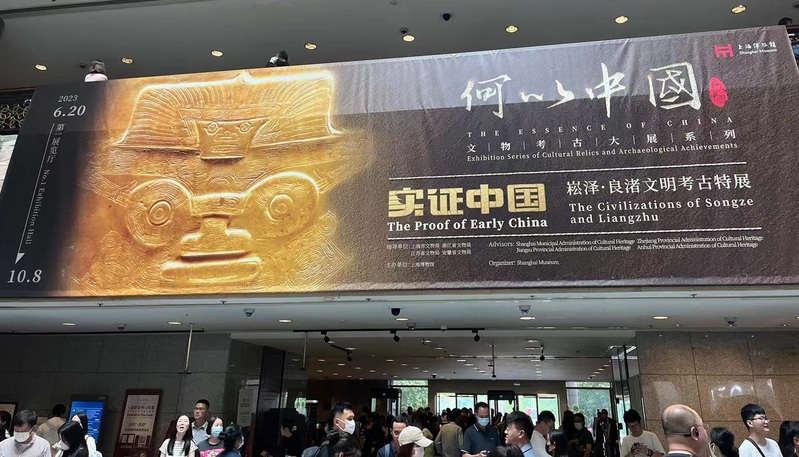
The "Empirical China" exhibition, which is currently in full swing, will showcase the great achievements of the first peak of civilization development represented by Songze culture, Liangzhu culture, etc. dating back 5800 to 4300 years ago. More than 320 sets of unearthed cultural relics from 19 museums and archaeological institutions across the country will appear to confirm that more than 5000 years ago, the ancestors of the lower reaches of the Yangtze River had already created a brilliant civilization comparable to the world.
The exhibition "Empirical China" arouses people's expectations
Chen Jie, Deputy Director of the Shanghai Museum, remembers that in 2010, when he was leading the second active excavation of the Liangzhu Culture Cemetery in Wujiachang, the Shangbo Archaeological Team discovered a large tomb. Among the many burial objects, two ivory scepters were first revealed to be towering. After a slight cleaning, it was discovered that the entire body was covered in exquisite carvings - the scepters symbolized power and order, and the carvings proved the level of productivity. Several generations of archaeologists have tirelessly explored and shown that the Songze culture, which dates back 5800 years, has experienced the earliest social hierarchy differentiation, while the Liangzhu culture, which dates back 5300-4300 years, has seen the earliest national form. This exhibition will tell the story of this historical period from four major sections: ancient China, rice cultivation, handicrafts, and jade.
Viewers can glimpse the correspondence and connection between "Empirical China" and the Xia, Shang, and Zhou civilizations presented in "Hometown China". The two exhibitions, from the civilization of the middle and lower reaches of the Yellow River to the civilization of the lower reaches of the Yangtze River, demonstrate the unity and inclusiveness of Chinese civilization, and also highlight the continuity of Chinese civilization.
The selected cultural relics from the "Empirical China" exhibition are many of the latest discoveries from famous archaeological sites such as Dongshan Village, Lingjiatan, Liangzhu, and Fuquan Mountain in recent years, covering the Yangtze River Delta region. "Through cultural relics, it is reflected that there were already common cultural values in the Yangtze River Delta region at that time." Chen Jie introduced that today's "postal areas" such as Jiangsu, Zhejiang, and Shanghai had formed a cultural community 5000 years ago, which is the foundation of the integration of the Yangtze River Delta. "Looking at today and the future from history is a very important clue."
Innovation showcases empirical evidence of Chinese civilization
Over the weekend, at the "Yuchu Liufang - Shanghai Museum Collection of Song and Yuan Ancient Books Exhibition" being held at Shanghai Expo, visitors lined up in front of the exhibition booth, many of whom were young people and children. The exhibition, which was originally considered "niche", was very popular.
Mr. Jiang, a post-95s audience member, saw the "Yueyang Tower Chronicles" included in books from different historical periods. "The beautiful literary style and the spirit of 'worrying about the world first, and enjoying the world later' have been passed down from ancient times to the present." He said that Chinese culture is thriving and continuous, with a unique spirit being passed down.
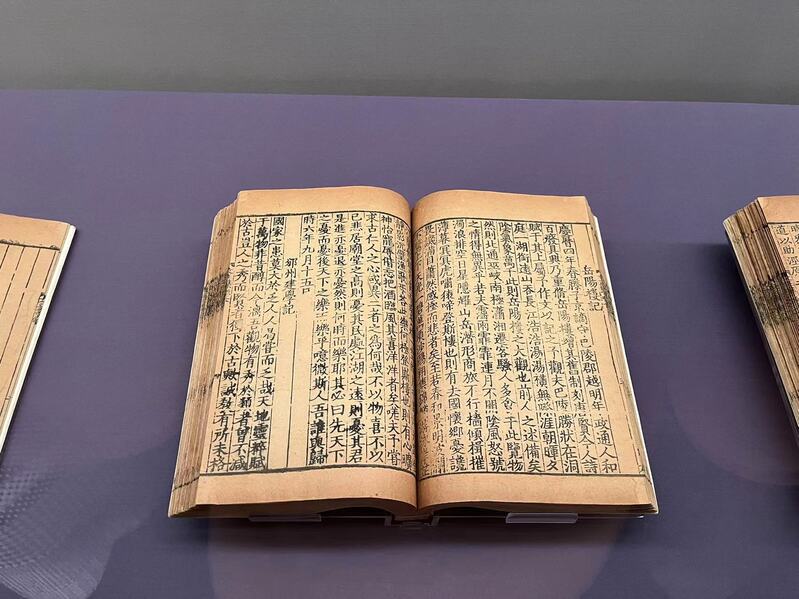
Shangbo is currently exhibiting an ancient book from the Song Dynasty that includes "The Story of Yueyang Tower"
Chen Cai, Deputy Director and Research Librarian of the Shanghai Museum Library, discovered that many young audiences keenly capture the curatorial "tricks". The exhibition hall displays the invention process of ancient woodblock printing through illustrations at the corner from the written edition to the engraved edition. Chen Cai used the first exhibited manuscript, the Lotus Sutra, as an example. "Because it was all handwritten, there may have been only ten pieces at that time." Through woodblock printing, the books were able to be printed in large quantities, and movable type printing further improved printing efficiency. Mr. Luo, the audience, sighed, "As the only uninterrupted civilization among the four ancient civilizations, the important reason for the continuation of Chinese civilization is continuous innovation."
Cultural relics showcase history and also reflect reality. During last year's "Homestay in China" exhibition, the Shanghai Museum innovatively opened "Cultural Relics Party Class", receiving a total of 89 batches and 1762 people from party organizations. Wang Yue, Deputy Director of the Bronze Department of the Shanghai Museum, once introduced to the audience that "staying in China" originally meant "the center of the country", and China's social model since ancient times has been a "concentric circle" formed around a center. In the audience, many party members are discussing, and this structure also indicates the historical inevitability of China's development requiring a core leadership force to oversee the overall situation. "Integrating the basic principles of Marxism with China's specific realities and with China's excellent traditional culture is a necessary path."
Tang Shifen, Secretary of the Party Committee of the Shanghai Museum, compared Chinese civilization to a long river when introducing the "Cultural Relics Party Course". "We need to know where it originates in order to know where it flows."
To promote the wider dissemination of Chinese civilization
The Shanghai Museum will also present the "Why China" cultural relics and archaeological theme exhibition on campus. As of the end of May, this recently completed project has been exhibited at 12 primary and secondary schools in Shanghai, encouraging students to conduct research on archaeological and cultural topics. In Chinese high schools, the "Why China" exhibition not only features permanent exhibits in campus museums, but also invites students to become volunteer guides, attracting 15800 teachers and students to visit and radiating to surrounding communities.
Making exhibitions go global is an exploration by Shanghai Museum to continuously expand the influence of traditional culture. "Museums are not only institutions for preserving and researching cultural relics, but also platforms for cultural dissemination." Chen Jie said that curation should not only focus on collections, but also serve the needs of urban culture and promote the dissemination of Chinese civilization.
In the future, another brand exhibition of Shanghai Museum, the "Dialogue World" series, will also introduce more content of Chinese civilization. Chu Xiaobo, the director of the Shanghai Museum, said, "We will link overseas exhibits with the collections of the Shanghai Museum and other domestic museum relics, allowing for cultural exchange and dialogue between Eastern and Western civilizations." The Shanghai Museum is also working on sending high-quality exhibitions reflecting Chinese civilization to various parts of the world, and a boutique Han Dynasty cultural exhibition that will tour Europe is being prepared.
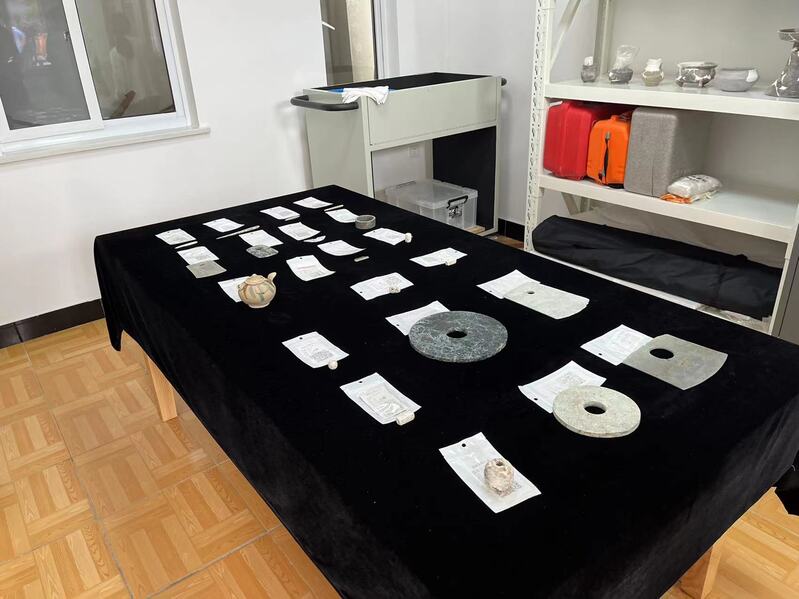
The Archaeological Workstation of the Fuquan Mountain Site at the Shanghai Museum is preparing for the next few decades
Understanding the long history of Chinese civilization and perceiving the vastness and profoundness of Chinese culture cannot be separated from archaeology. On April 18th of this year, the archaeological workstation of the Fuquan Mountain Site at the Shanghai Museum was unveiled in Zhonggu Town, Qingpu District. Some of the exhibits from the "Empirical China" exhibition were verified and restored here. The Fuquan Mountain Site, separated by a wall, has been explored for over 1 million square meters. Currently, the excavation area is less than 4000 square meters, and the archaeological work site will prepare for continued work in the coming decades.
One of the curators of "Dwelling in China", Hu Jialin, remembers a young girl standing in front of the inscriptions and inscriptions in the Yin Ruins, sliding a tablet to observe, immersing herself in one stop for an hour. In the eyes of many cultural and museum workers, the rapid development of the economy has given the younger generation confidence in their lives. They aspire to a more systematic understanding of Chinese civilization and continuously enhance their cultural confidence. "This is our mission."
